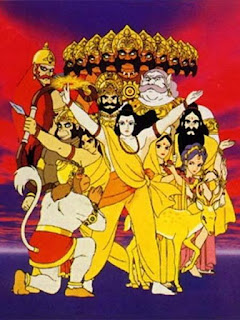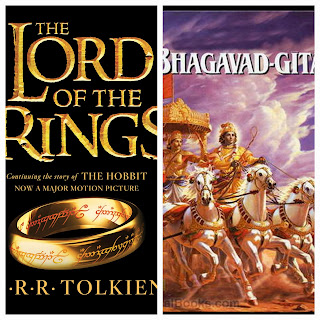Lessons from Ramayana in the context of modern-day Science
India is blessed to have such profound scriptures like Ramayana, Mahabharata, and Bhagwat Gita that we can keep learning their significance even today in the context of modern-day Science.
Here is my attempt to understand the essence of Ramayana in the context of the present-day understanding of Science in a nutshell.
Ram is the symbol of divine or Universal Consciousness, the ultimate reality, the God or quantum observer of our lives that pervades the quantum field with universal intelligence. Sita symbolizes us, our Soul, our being, the individual Consciousness. Although an integral component of Universal Consciousness, it is seized by the ego-oriented mind because of the forgetfulness of the Self. Her journey is a metaphor for the individual journey toward self-realization, which involves overcoming various challenges and obstacles. Laxman Rekha represents Conscious Awareness, a built-in program in our forebrain to observe our thoughts. It has the power of metacognition, an awareness of one's thought processes, and an understanding of their patterns. However, blinded by our desires, we cross the Laxman Rekha, marked by Laxman, who symbolizes our innate intelligence, which has the power of discernment and tries to stop ego-driven actions. Our ego, the analytical part of the forebrain that is never contented, joyful, and at peace, seizes Sita, our being by deceit. Rawana symbolizes the ego. The ten heads are just a metaphor. In reality, there are millions. Even before one desire ends, the other stares at us with a much greater force. Once we are in the grip of ego, we lose our connection with our eternal Soul, the Ram. And there is no way to win over them until and unless we surrender to the Universal Consciousness and let it express itself through us and take control of our lives. Hanuman symbolically stands for pure devotion, complete surrender to our Consciousness, and absence of ego or the lower Self. However, the obstinate ego-driven mind, the Ravana, refuses to give up and only creates pain, misery, and suffering for us, making us forget about the inherent joyful nature of our Soul. Mandodari, Ravan's wife, symbolizes our limbic system, the middle brain, which is our emotional response to our thoughts and ego. Vibhishan represents the inherently knowledgeable part of the forebrain that has the wisdom to understand reality but is overpowered by the ego.
The hindbrain handles much of the subconscious mind, symbolized by Meghnath, Ravan's son, who was very powerful. Our subconscious mind comprises our habits, follows patterns, and is primarily automated and forceful. Our analytical mind often fails to control the subconscious mind, and we fall into the traps of our conditioned patterns. These patterns define our actions, habits, our character, and, eventually, our destiny. Kumbhkaran symbolizes our unconscious mind, which is very powerful but mostly sleeping. We are unaware of our unconscious mind, yet it exerts considerable influence over how we think, feel, and behave. Primitive instincts, emotional baggage, and ingrained habits are subconscious and unconscious forces that can drive our lives if we don't have mastery over them.
Ram could have victory and win back Sita when he could defeat Ravana and his brother, son, and the powerful army. The practice of Dhyan/meditation invokes arrows that Ram shot to kill Ravan, the ego-dominated mind, and liberate Sita, our Soul. By practicing meditation, we can have dominance over our subconscious mind, thus paving the way for our Soul to awaken and become the pilot of our lives by the sheer grace of its presence. Ram always wins. The question is when we are ready to defeat the Ravan. 😊🙏



Comments
Post a Comment